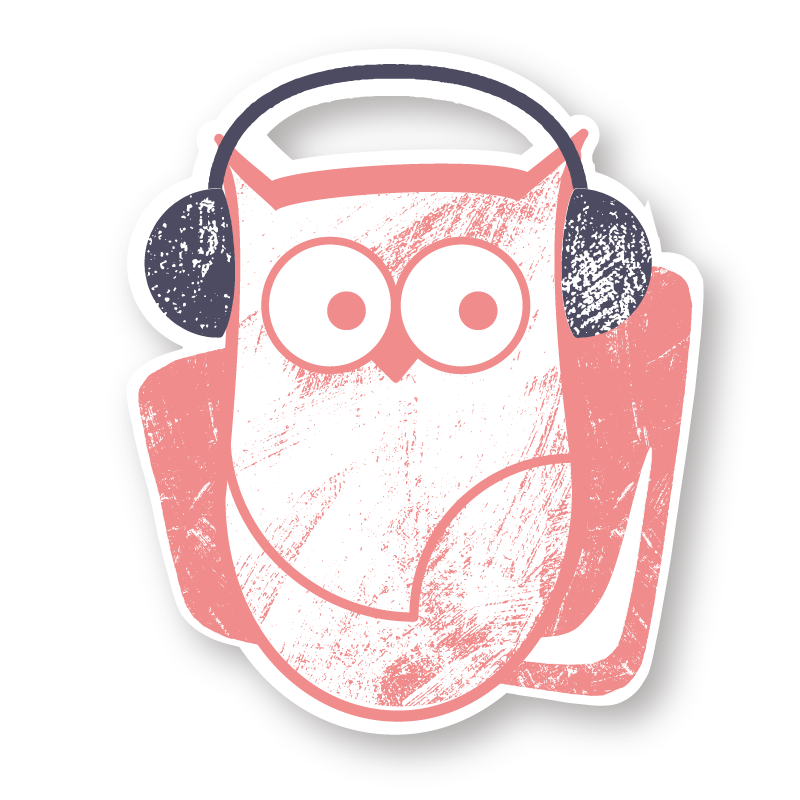Humour in children’s media
The child bubbles over with laughter, and you just stand there with question marks on your face and a polite imitation of a smile. Fart jokes and slapstick gloating are very popular. What’s to become of this child?
„Humour is the umbrella of the wise.“
Erich Kästner
You, on the other hand, wonder when the age will come when your child will understand the more subtle jokes and references that make your heart beat faster.
Children learn humour as they learn all other social interactions: mainly through imitation. They start with what they understand. They try out, look at the reactions of their caregivers. Who’s laughing when? The why comes later, but it comes.
Humour also changes very quickly, depending on the age of the children. For example, it is difficult to address a broad audience in children’s films in a humorous way.
How to be funny and relevant
„Humour is certainly not the safest path to take. But it is a very effective tool in everyday life. It is certainly about more than entertainment. After all, entertainment has only played a major role in human history for a fairly short time. Before that, people had no time for entertainment at all. The original function of humour, which was already important for cavemen, is different: to cope with our unpredictable environment. Humour and laughter is the victory over fear and insecurity. That’s the very function of humour.“
Bob Mankoff, chief cartoonist for The New Yorker magazine, in an interview with Wirtschaftswoche, April 20, 2014
Two weeks ago I attended the event How to be funny and relevant – Humor in Children’s Film at the Film University Babelsberg as part of the Academy for Children’s Media. The series of lectures followed by a panel discussion, made possible by the Förderverein Deutscher Kinderfilm, the Film University Babelsberg Konrad Wolf and X Filme Creative Pool, examined the topic from a number of interestingly different angles.
Speakers were Dr. André F. Nebe (director, author, researcher), Pauline Kortmann (animator, director, photographer) and Frederik Hansen (Chief Executive Monkey at the Danish production company OK Monkey).
The Analytical
Hey, hey, Wickie!
„A successful children’s film should be exciting and funny“
Dr. André F. Nebe
Dr. André F. Nebe has made the incredible effort to meticulously comb through some German children’s film productions for humorous moments and to sort them by type of humor and compare them with each other.
Why? Because children probably have the desire for both exciting and funny films. Humour as transport material for the more serious topics, so to speak. Ideally, I’d say.
My personal comment on this : Children want to be entertained, they want to feel emotions and are receptive to more difficult topics, but communicating through humour is usually a good idea.
Dr. Nebe’s table-graphic comparison of three films shows clear differences. While the section shown from Paula’s Secret is only partially interspersed with subtle adult humour (if at all), the feature film production of Witch Lillihas already come up with statistically more and multi-layered humour. However, the Michael „Bully“ Herbig remake of Wickie and the Strong Men out-manoeuvres the other two with a continuous (!) firework of the most different gags. I am not surprised that Bully Herbig knows how to entertain a wide audience.
Timing is everything
I don’t think we need to talk further about the depth of humour at this point. I personally found the excerpts from the first two examples shockingly unfunny. Different, yes, but for me as an adult at least from these short excerpts either unrecognizable (Paula’s Secret) or almost unbearably slapstick comedic (Witch Lilli). And with Wickie I really had to laugh. And still a few minutes of inward giggling. It was a very clumsy humorous scene, but perfectly composed. Timing and moments of surprise are decisive keywords for me.
Humor is expensive
And this brings us to the explanation why higher production budgets may also produce more funny movies: Humour is not easy to create. Besides talent, it takes time to find the perfect timing, the perfect words, to create complexity. Humour is art and craft.
Hypotactic humour structure
Dr. Nebe considers Wickie the so far unbeaten funniest film for children. Visual jokes would be more important to the target audience than funny dialogues. Wickie creates a seamless multi-layered humour about the initial gag (paratactic humor) in combination with a surprising twist.
More about this in Dr. Nebe’s book Humour and Successful Children’s Films. [Unpaid Ad]
The Empathic
Frog Weather
Pauline Kortmann created the really cute and recommendable animated film Frog Weather on the subject of climate change.
She interviewed children on the subject and drew and animated the illustrations, with a weather-forecasting frog as protagonist.
Competent children
She shares with us some insights about her work with the children:
- the attitude of the children (in their case the willingness to cooperate) changes dramatically with each new age
- Children are very political when they are interested in the subject
- Children are very empathic and encounter animal characters in a humanized way
- Nature is very important for them
- Children have a strange sense of humor (fart jokes and slapstick – I already mentioned it)
From the extensive collected material Pauline has cleverly and loyally compiled both funny and likeable statements, which are very beneficial to the overall work and the appreciative reception.
By children for children?
Which surprised me a little, but I was very pleased: I think that children tend to perceive the statements of their own peer group differently than adults, who already have more knowledge on the subject and see the joke in the sympathetically childlike logic from an adult perspective. Nevertheless, even children find this combination funny and are enthusiastic about the film, for example at festivals.
The Provocative
„Kids are id***s“
Frederik Hansen, Chief Executive Monkey at the Danish production company OK Monkey, starts his lecture with a frighteningly openly provocative, ableistic adultism.
Before you press the „close“ button: In the end I found Frederik to be extremely loyal and super appreciative of both children and parents.
The title of the lecture refers to the fact that children learn humour like many other things.
And that’s funny because …?
They laugh, for example, when they feel safe, i.e. when they are at least one step ahead of the obviously „wrong“ behaviour of the funny person and thus recognise the „wrong“ thing about the situation. Children WANT to do everything right (despite all prophecies of doom). They themselves are in the process of learning social skills.
They also laugh when there is an exaggeration that makes it easy for them to recognise the intention of the humour. Human flaws and characteristics play a role in recognition.
Target group oriented humour
When I asked one of our mentors – admittedly somewhat provocatively – why films that are obviously not particularly funny, although they want to be, make it into the cinema, he pointed out to me that I was not the target group. So as a writer I should make jokes for specific target groups that I do not consider funny myself? I felt instant inner resistance.
Child-friendly, of course. But not at all adult-oriented?
„I want to be challenged“
Frederik then found suitable words for a more than satisfactory answer: We want to be challenged, this applies to us as adults as well as to children. For people, because we should stop naming children as children in general, they are individuals. They are young people with their very own feelings and perceptions. It’s refreshing to hear this pronounced even outside „our“ filter bubble.
„There is no stronger moment
Frederik Hansen
as when a child and their parents laugh together.“
Even if we find different things funny, laugh at different things: laughing together is a powerful bonding element. How nice it is when the parents are brought on board. In the process of accompaniment, it helps us parents so much if we also feel entertained, taken seriously, and can freely enjoy the wit and humour and everything else that goes with a good production.
Again!
After all, learning humour means that our children watch the same episode, the same film, again and again and again … They do not have to understand everything from the beginning. Repetition is a crucial element in this process. And how tiring when we as chaperones have been bored to death right from the start.
Lat’s talk about it
Kids see us laugh, even if they don’t yet understand why. This brings us into a discussion about what we find funny, what makes us laugh. And we adults can still learn a lot from our children if we listen to them and talk to each other.
Inclusive humour
And last but not least, the most important thing in my eyes when it comes to humour in children’s media: We should never laugh AT children, but WITH them. This is often a fine line that not all media makers are able to draw. And also the audience is not always aware of what they are laughing about. #nonmention
For further thinking
A precious voice from the audience
Of course, we should not forget the deeper and quieter films and stories. They often stick longer and more intensely in the head, cause reflection on the subject matter and possibly occupy our children much more intensively than the purely funny and entertaining productions.
Dysfunctional vs. moral-compliant humor
And considered very precisely and subtly, many jokes and humorous elements are extremely dysfunctional humour. What is allowed? What is healthy? How do we manage to bring our ethical values in line with a good sense of humour? How do we prevent children from taking the template of dysfunctional humour as a basis for learning? What shall we share with our children?
My spontaneous and way too short answer would be: look closely, reflect, communicate. Enter into conversation without evaluation. Why do we find this or that funny? Why don’t I like that kind of humour? What do you think is funny? How does person X feel when we laugh about this?
In that way we as parents can show how to handle media, content and ethical values in a responsible and reflective way.
Conclusion
Humor is powerful, even when it comes to more difficult topics. It offers space for connection – when used wisely –, but also for separation if one is not careful.
As exciting as it is to measure humour and determine success by it, for me humour ultimately remains a feeling that should match my individual ideas and standards with artistic and technical skillfulness.
My child is free to laugh at different things than I am, just as everyone is free to laugh at different things. Within my family, however, I have the responsibility to discuss morals and social dynamics.
Let’s laugh together.
And. Never. AT. Children.









